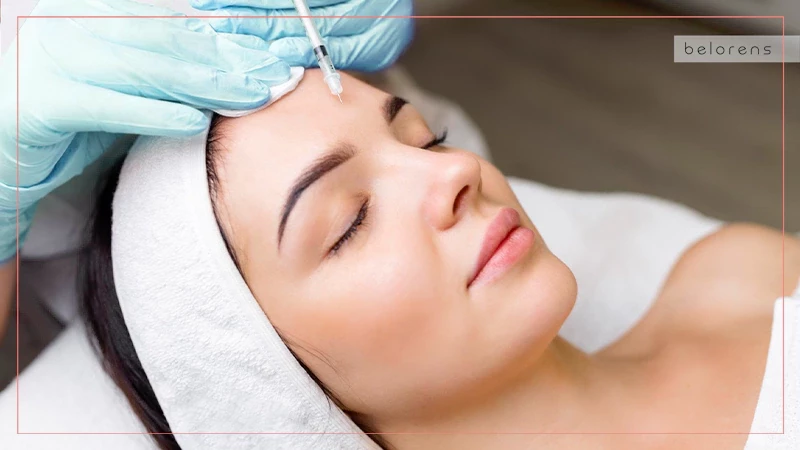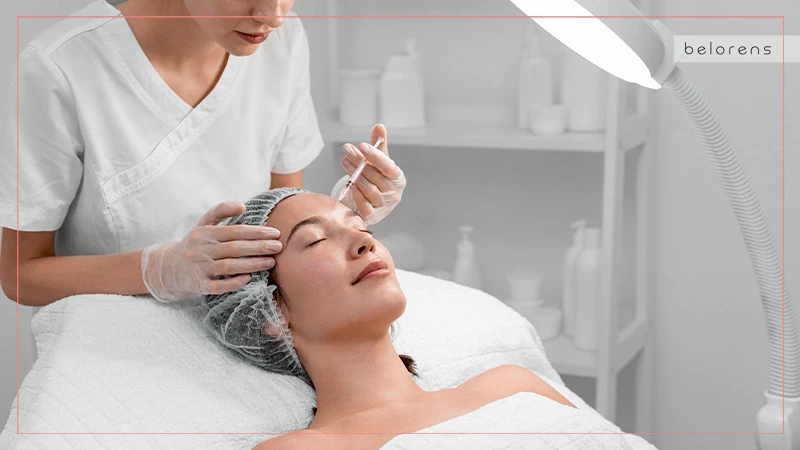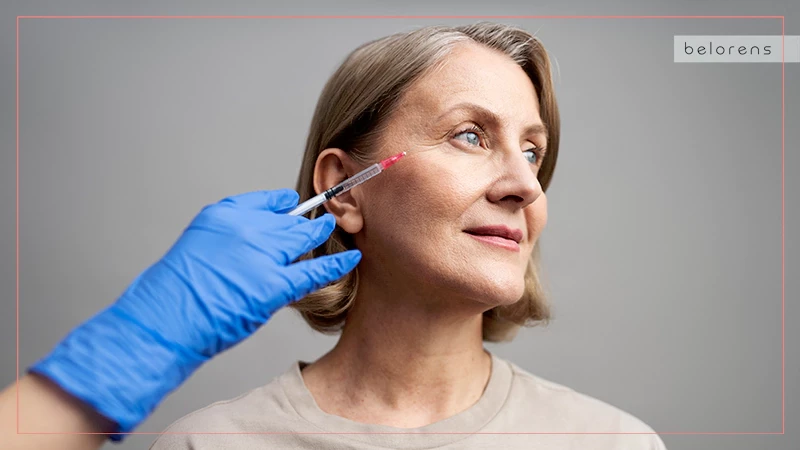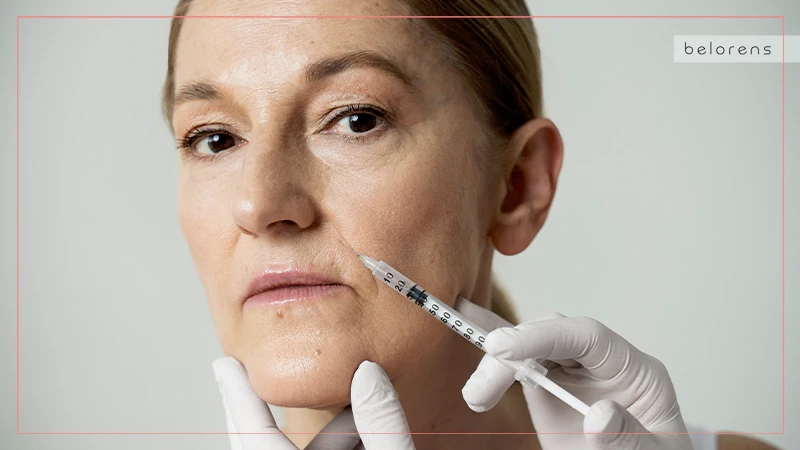Published on 6 Mar 2024
Botox vs Dermal Fillers: Choosing the Right Solution for Your Aesthetic Goals
- ByMedical Content Team
- Medically Reviewed byDr. Sabine Kulhanek
Fact checked

In the world of cosmetic enhancements, the pursuit of a youthful and rejuvenated appearance has become increasingly popular. With a plethora of options available, it can be overwhelming to determine which treatment is best suited to address your specific concerns. Among the most sought-after non-surgical procedures are Botox and dermal fillers, both renowned for their ability to diminish signs of aging and enhance facial features. However, understanding the key differences between these two treatments is crucial in order to make an informed decision and achieve the desired results.
Botox and fillers are distinct in their mechanisms of action and the cosmetic issues they target. Botox, short for botulinum toxin, is a neurotoxic protein that temporarily paralyzes the muscles responsible for causing wrinkles and lines on the face. It is commonly used to treat dynamic wrinkles, such as crow's feet, forehead lines, and frown lines between the eyebrows. On the other hand, fillers, also known as dermal fillers, are injectable substances designed to restore volume, smooth out wrinkles, and enhance facial contours. They are typically used to address static wrinkles, like nasolabial folds, marionette lines, and hollowed cheeks.

While Botox and fillers share the goal of enhancing one's appearance, they differ in terms of their longevity, target areas, and treatment outcomes. Botox results typically last for three to four months, after which the treatment needs to be repeated to maintain the effects. Fillers, on the other hand, can provide results that last anywhere from six months to two years, depending on the specific filler used. Additionally, Botox primarily focuses on relaxing muscles and reducing the appearance of wrinkles caused by repetitive facial movements, while fillers excel at restoring lost volume and smoothing out deep lines and creases.
Choosing between Botox and fillers ultimately depends on your individual needs, concerns, and desired outcomes. Factors such as the areas you wish to address, the level of invasiveness you are comfortable with, and the duration of results play a significant role in determining which treatment is most suitable for you. Consulting with a qualified medical professional experienced in facial aesthetics is essential to evaluate your unique facial anatomy, discuss your goals, and develop a personalized treatment plan to achieve natural-looking and harmonious results.
In this comprehensive blog post, we will delve deeper into the world of Botox and fillers, exploring their uses, procedures, costs, side effects, and longevity, as well as their similarities and differences. We will provide you with the information you need to make an informed decision about which treatment option aligns with your aesthetic aspirations. Whether you're looking to smooth out fine lines or restore youthful volume, join us as we navigate the fascinating journey of Botox and fillers, empowering you to make the right choice to enhance your natural beauty.
What is Botox?

Botox is a brand name for botulinum toxin A, a neurotoxic protein derived from the bacterium Clostridium botulinum. It is a widely recognized and FDA-approved treatment for reducing the appearance of wrinkles and fine lines on the face. Botox works by temporarily blocking nerve signals to specific muscles, relaxing them and resulting in a smoother, more youthful appearance.
Note: There are other brand names for this type of botulinum toxin, which are used for cosmetic applications — such as Dysport, Xeomine, and Jeuveau — but as people use Botox as a generic term for all these products, we too only use the word Botox in this writing, by which we mean all other similar similar brands as well.
What are Dermal Fillers?

Dermal fillers are substances that are used to restore volume, fill in lines and wrinkles, and enhance facial contours. These fillers are typically composed of hyaluronic acid, a naturally occurring substance in the body that helps maintain moisture and elasticity in the skin.
Dermal fillers can address areas of lost volume, such as nasolabial folds, marionette lines, and hollowed cheeks, resulting in a more youthful and refreshed appearance.
Uses of Botox vs Fillers
• Botox

Botox is primarily used to treat dynamic wrinkles, which are caused by repetitive facial movements. Common areas of treatment include crow's feet (lines around the eyes), forehead lines, and frown lines between the eyebrows (glabellar lines).
It can also be used to create a subtle brow lift, soften a square jawline, and treat excessive sweating (hyperhidrosis) and migraines.
• Dermal Fillers

Dermal fillers are versatile and can be used to address various aesthetic concerns. They are commonly used to restore volume to areas that have lost fullness due to aging or other factors. Dermal fillers can effectively smooth out nasolabial folds, marionette lines, and vertical lip lines.
They can also enhance the lips, improve the contours of the cheeks and chin, and reduce the appearance of scars and depressions.
Botox vs Fillers Procedure
• Botox
The Botox procedure involves a series of small injections targeted at specific muscles using a fine needle. The treatment is relatively quick, with minimal discomfort, and typically does not require anesthesia. Results become noticeable within a few days to a week, with maximum effects appearing after approximately two weeks. Botox treatments are temporary and generally last around three to four months.
• Dermal Fillers
Dermal filler treatments also involve injections, but the technique and depth of injections may vary depending on the specific filler used and the treatment area. A topical or injectable anesthetic may be used to minimize discomfort. Results are immediate, with optimal outcomes visible once any swelling or bruising subsides. The longevity of dermal fillers varies depending on the type of filler used, ranging from six months to two years.
Botox vs Fillers Cost
• Botox
The cost of Botox treatments is typically determined by the number of units needed and the expertise of the injector. Prices can vary depending on the geographic location and the specific clinic. On average, Botox treatments can range from $200 to $800 per session.
• Dermal Fillers
The cost of dermal fillers depends on factors such as the type and quantity of filler used, the area being treated, and the experience of the injector. Prices generally range from $500 to $1,500 per syringe.
Botox vs Dermal Fillers Side Effects
• Botox
Common side effects of Botox injections include temporary bruising, swelling, and redness at the injection site. Other potential side effects may include headaches, flu-like symptoms, and drooping eyelids or eyebrows. These effects are typically temporary and resolve on their own.
• Dermal Fillers
Common side effects of Botox injections include temporary bruising, swelling, and redness at the injection site. Other potential side effects may include headaches, flu-like symptoms, and drooping eyelids or eyebrows. These effects are typically temporary and resolve on their own.
Also Read: When to Get Botox Injections and Dermal Fillers?
Botox vs Dermal Fillers Longevity
• Botox
The longevity of Botox treatments typically ranges from three to four months. After this period, the effects gradually wear off as the muscles regain their normal function and wrinkles may reappear. To maintain the desired results, repeat treatments are necessary.

• Dermal Fillers
The longevity of dermal fillers varies depending on the type of filler used. Hyaluronic acid fillers generally last between six months to two years, depending on factors such as the specific product, treatment area, and individual metabolism. Thicker fillers tend to last longer than those with a thinner consistency.
Similarities and Differences Between Botox and Dermal Filler
Similarities
- Non-surgical: Both Botox and dermal fillers are non-surgical treatments, providing a less invasive alternative to surgical procedures.
- Temporary results: Both treatments offer temporary results, requiring repeat treatments to maintain the desired outcomes.
- Minimally invasive: Both Botox and dermal fillers involve injections, but they are generally considered minimally invasive procedures.
- Versatility: Both treatments can address specific aesthetic concerns and be tailored to individual needs.
Differences
- Function: Botox targets dynamic wrinkles caused by muscle contractions, while dermal fillers restore volume and fill in lines and wrinkles.
- Composition: Botox is derived from botulinum toxin, while dermal fillers are typically composed of hyaluronic acid or other substances.
- Treatment Areas: Botox is commonly used for the upper face, while dermal fillers are more versatile and can be used in various facial areas.
- Longevity: Botox typically lasts three to four months, while dermal fillers can last anywhere from six months to two years.
Also Read: Injectable Toxins: Compare Botox, Dysport, and Xeomin
Takeaway
Choosing between Botox and dermal fillers depends on your specific aesthetic goals and concerns. Botox is ideal for addressing dynamic wrinkles, while dermal fillers excel at restoring volume and enhancing facial contours. Consult with a qualified medical professional to assess your unique needs and develop a personalized treatment plan. Remember to consider factors such as cost, procedure, side effects, and longevity when making your decision. With the right treatment choice, you can achieve a more youthful and revitalized appearance that aligns with your aesthetic aspirations.




